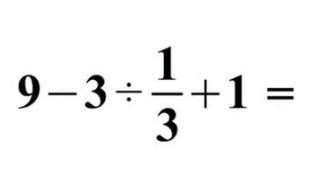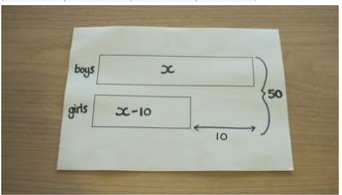The Mathematics curriculum at Kidbrooke Learning Centre aims to scaffold understanding of key concepts enabling students to confidently tackle complex mathematical tasks. In Years 7-9, students build on the success they have experienced from the SATs and/or 11+ exam experience to embrace more challenging mathematics. The focus is on deepening their mathematical reasoning on their way to starting a very demanding GCSE / Key Stage 4 Curriculum.
The introduction of ‘real life’ maths, the application of formulae to extended learning, the linking of concepts taught in mathematics such as exponential graphs to concepts in science such as exponential growth of bacteria and disease are some of the things introduced and explored at Kidbrooke Learning Centre. What is introduced in Year 7 is re-introduced in Years 8 and 9 but with more complicated concepts added and the challenges and expectations increases with every year.
Students are supported to embrace the GCSE / Key Stage 4 Mathematics Curriculum with the expectation of securing ‘easily’ a grade 6 in the final GCSE Summer exams.


- Topic: Numbers – GCSE Grade 4 and 5 topics.
- Using a calculator in complex situations, knowing not to round during intermediate steps
- Multiplying by a number between 0 and 1 and understanding the effects
- Calculating with fractions (+, -, x and ÷)
- Calculating with ratios
- Calculating percentage decrease and increase using a multiplier
- Multiplying and dividing by powers of 10 and decimals
- Finding the prime factor decomposition of a number
- Using the rules of indices in numeric situations (2, 3, 4 etc.)
- Round to one significant figure and use to estimate answers to calculations (division by a number less than 1)
- Multiplying and dividing numbers of any size
- Calculations involving proportional change (direct proportion)
- Calculating compound interest
- Calculating repeated percentage changes
- Calculating reverse percentage problems
- Finding HCFs using prime factor decomposition
- Understanding and using negative indices (-1, -2, -3 etc.)
- Dividing by a number between 0 and 1 and understanding the effects
- Identifying when are upper and lowers bounds useful
- Calculating with fractions and mixed numbers
- Calculations involving proportional change (inverse proportion)
- Calculate accurately with multiples of π
Topics: Algebra – GCSE Grade 4 and 5 topics
- Square a linear expression, and expand and simplify the product of two linear expressions
- Use graphical methods to solve simultaneous linear equations in two variables
- Solve inequalities in one variable and represent the solution on a number line
- Use mathematical and scientific formulae
- Substitute into expressions and formulae
- Derive formulae
- Change the subject of simple formulae
- Find the next term and nth term of quadratic sequences and functions and explore their properties
- Trial and improvement, cubic
- Solve equations 2x + 4 = 12 – 3x
- Expand single brackets and simplify nth term linear
- Substitution into complex formulae.
- Use algebraic methods to solve simple simultaneous linear equations in two variables
- Plot the graphs of simple quadratic and cubic functions
- Quadratic tables and graphs
- Real life graphs, water filling, travel graphs
- Find length of a line given 2 points
- Factorise quadratic expressions including the difference of two squares, where the coefficient of x2 is 1
- Multiply double brackets and simplify
- Solve quadratics by factorising
- Solve harder simultaneous equations using algebra
- Draw and use tables and graphs of cubic and reciprocal functions
Topics: Handling data – GCSE Grade 4 & 5 topics
- Suggest a problem to explore using statistical methods, frame questions and raise conjectures
- Identify possible sources of bias and plan how to minimise it
- Design questionnaires
- Select the appropriate average to analyse data
- Understand relative frequency as an estimate of probability and use this to compare outcomes of an experiment
- Examine critically the results of a statistical enquiry, and justify choices
- Explain the use of mean, median, mode etc.
- Estimate the mean/ median of a set of grouped data
- Compare two or more distributions and make inferences, using the shape of the distributions and measures of averages and range
- Know when to add or multiply two probabilities
- Use tree diagrams to calculate probabilities of combinations of independent events.
Topics: Handling data – GCSE Grade 6 & 7 topics
- Estimate and find the median, quartiles and interquartile range for large data sets, including using a cumulative frequency diagram
- Draw box plots from cumulative frequency diagrams
- Compare two or more distributions and make inferences, using the shape of the distributions and measures of average and spread, including median and quartiles.
- Select and use a suitable sampling method, including stratified sampling
- Probabilities of combined events using multiplication.
Topic: Shape, Space and Measures – GCSE Grade 4 & 5 topics
- calculate missing lengths using Pythagoras’ Theorem
- Solve problems using speed, distance, time and mass, volume, density
- Calculate lengths, surface areas and volume in shapes and prisms
- Consider rounding accuracy when solving problems
- Draw the locus of a point
- Use congruency
- Use sine, cosine and tangent in right-angled triangles
- Solve problems involving arcs, sectors and segments
- Write a vector in terms of two other vectors.
Topic: Shape, Space and Measures – GCSE Grade 6 & 7 topics
- Use similarity
- Enlarge shapes with a negative integer
- calculate surface area or volume of pyramids and spheres
- use Pythagoras’ Theorem in 3D situations
- use similarity in length, area and volume
- calculate the distance between points using 3D co-ordinates
- use circle theorems
- carry out an enlargement with a negative fractional scale factor.